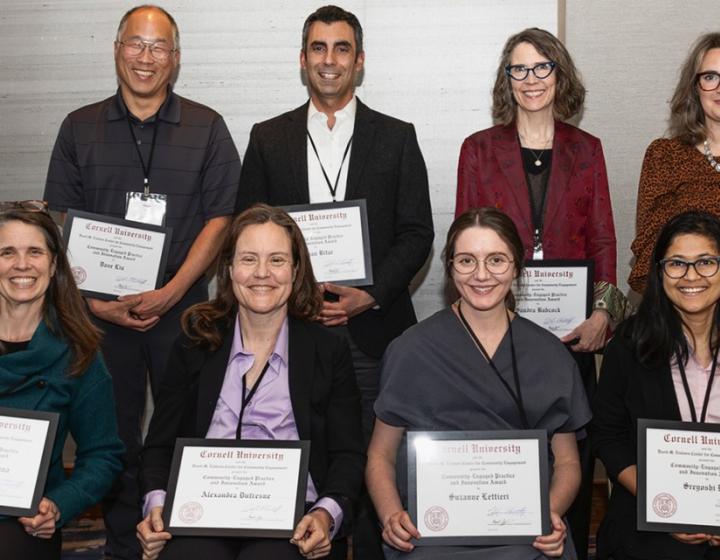Infant immunities live fast and die young
 Infectious diseases remain a major killer of infants around the world. Immunizations curtail the spread of disease and protect young people against dangerous complications by teaching immune systems to remember pathogens. But infant immunities rapidly wane, usually requiring extra booster shots after an initial vaccine.
Infectious diseases remain a major killer of infants around the world. Immunizations curtail the spread of disease and protect young people against dangerous complications by teaching immune systems to remember pathogens. But infant immunities rapidly wane, usually requiring extra booster shots after an initial vaccine.
Current Cornell research is seeking better ways to strengthen newborn immune system memories. With an approach that will upturn prevailing perceptions about newborns’ susceptibility to infection, immunologist Dr. Brian Rudd at the College of Veterinary Medicine is examining a new angle immunizations could take in protecting infants and children from a slew of infectious diseases.
“The perfect vaccine would be a single dose given at birth that generates long-lasting immunity. However, no such vaccine exists in the US because we still do not understand why immunity is rapidly lost in infants,” said Rudd. “Our lab is addressing this gap in our knowledge, which will ultimately lead to more effective ways of enhancing immunity in early life.”
Immunity against most microbes depends on forming memory T cells that remember specific pathogens and can rapidly respond to subsequent infections. While large numbers of highly effective memory T cells are almost always generated following infection in adults, memory T cells elicited by neonatal infections rapidly die and fail to transition into the long-lived memory pool. Rudd’s novel insight into these age-related differences disproves the common notion that newborn immune cells must just have a weak or sub-optimal response.
“We performed detailed analyses of memory T cell response in early life,” said Rudd. “Surprisingly, we found that newborns’ cells actually responded more vigorously to infection compared to adults. We also found that newborns’ cells go through their lifespans more quickly and die off sooner, before they can give rise to memory T cells and remember what they’ve learned. So the immune system is forced to start the learning process over again when infected by the same pathogen later in life.”
That revelation could change the way we immunize infants, says Rudd. To get to the root of what causes newborn killer T cells’ hyperactivity, Rudd is tracing back to their source.
 All Killer T cells come from hematopoietic stem cells (HSC), prototype bodies that become blood cells. Fetal HSCs come from the liver. As infants grow through childhood, HSC production slows to a halt in the liver while starting up in the bone marrow. By adulthood, HSC production has shifted entirely to the bone marrow.
All Killer T cells come from hematopoietic stem cells (HSC), prototype bodies that become blood cells. Fetal HSCs come from the liver. As infants grow through childhood, HSC production slows to a halt in the liver while starting up in the bone marrow. By adulthood, HSC production has shifted entirely to the bone marrow.
Fetal liver HSCs and adult bone marrow HSCs are similar but use different programs to function and grow. Genetic messengers regulate these programs. But fetal HSCs from the liver appear to express different amounts of the genetic messengers, which enable them to proliferate more rapidly than adult HSCs. Without regulators reigning in their proliferative activity, these cells live fast and die young.
“We’re testing whether differences in the expression of these genetic messengers affects the proliferation and maintenance of neonatal memory T cells after infection,” said Rudd. “We predict that age-related differences between fetal and adult HSCs underlie defective formation of memories in early life.”
Rudd’s lab is adjusting the expression of different proteins in different-aged T cells to determine how developmental variation in these factors influence memory cell behavior and fate. They are also performing genome-wide analyses of different-aged T cells to find the genes that code these differences.
“We hope to find a way to make neonatal cells behave more like adult cells in how they learn from vaccines and respond to infection,” said Rudd. “Knowledge gained from these studies could be used to design more effective therapeutic interventions and vaccines that can be safely administered in early life.”





